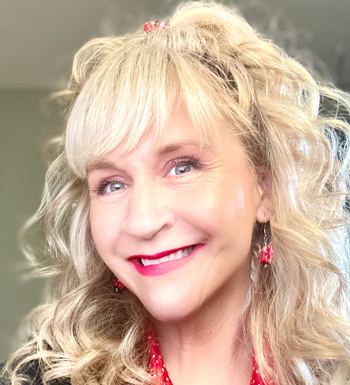Curious, Compassionate Listening:
3 Tips From My Yoga Practice That Make Me a Better Moderator
by Heather Hardiman
-

“We have two ears and one mouth so that we can listen twice as much as we speak.” This quote is credited to Epictetus, the Greek philosopher known for his contributions to stoicism.
I’ve been using this quote in my modern vernacular for some time, and I believe it’s served me well, especially in my chosen profession as a moderator. Active listening is a skill that can be developed. We moderators learn the importance of quality listening early in our training. But it’s one thing to be a good listener and yet another entirely to listen with rigor and unrelenting focus, all while maintaining genuine curiosity and an open heart, and suspending judgement, biases, and assumptions about what’s being said or about to be said. This type of curious, compassionate listening is critical for developing high-quality understanding and insight.
But how do we maintain a high level of engagement while listening? Our attention is scattered between backroom chatter, respondents talking over each other, and our internal monologue predicting what respondents will say next. Especially after multiple in-depth interviews or focus groups have occurred, we start to hear themes emerge and we assume that current respondents will fall in line with the previous respondents. Quite frankly, many times they do. But sometimes people can say similar words but with a different inflection or meaning. Tone of voice has much to do with meaning, which is why it’s so important to listen closely, not just to the words being said but to HOW they’re being said.
So what tools are available to us to help avoid jumping to conclusions and neglecting to probe for more details? I’d like to share a few things I’ve learned in my 10+ years of yoga practice. I use them regularly in my work as a moderator. You might consider adding them to your toolbox to ensure the curious, compassionate listening that’s required to gain a deeper understanding of human motivations.
Calming the Nervous System
Sometimes after a session I’m overwhelmed with all the learnings swirling in my head and can experience some anxiety and stress about how I’ll sort through them all. When that happens, I practice this breathing exercise. First, I stand up and go to a quiet place if moderating in person, or from the comfort of my home office if moderating virtually. Next, I take a big breath in through my nose and, at the top of my inhale, I take another quick inhale of air. Then I let the breath out as slowly as I can. This breathing technique is known to calm the nervous system and help with anxiety. Dr. Andrew Huberman has a great video from the Tim Ferriss show a couple years ago on how this helps one’s state of mind:
https://youtu.be/kSZKIupBUuc?si=r1c8z0zRvSENUAnS
Move the Body
Another practice I use quite often is to channel my inner Taylor Swift and “shake it off” – literally! I stand up after a session and stand with my feet about hip-width or slightly wider apart. I get a soft bend in my knees and place the weight of my body on the balls of my feet, then shake and bob my legs around, and then bounce on my heels. Next, I shake my hands, then my arms, then my shoulders. Lastly, moving my head and neck, I imagine shaking off the energy of that previous session to leave it all on the floor so I’m fresh and prepared for the next session. Yes, it feels a bit silly at first, but being silly is something we all need in our lives to take things less seriously. This also helps me create a physical signal to “forget” everything I just heard, and enter the next session refreshed, filled with curiosity for what I’m about to hear from all these new respondents with their own unique perspectives on the topic at hand. In yoga, this is called Qigong (pronounced “chee-gong”) shaking, and it helps reset the parasympathetic nervous system. That’s the rest-and-digest system, vs. the sympathetic nervous system that controls flight, fight, or freeze – which gets plenty of activation in our modern world! Shaking also activates the lymphatic system, which helps to cycle toxins out of the body.
https://youtu.be/Tx8CVkfmIYE?si=C5dUTc3UpWEfzbYT
Breath of Joy
Other times after a session, particularly one with a heavy topic, I can feel sadness for the experiences shared by the respondents. I did focus groups once for parents with chronically ill children, and it was hard for me to shake that off. I felt the sorrow for days after these two focus groups and knew I needed to find a tool for this type of situation. I did some research after that and learned about the Kundalini yoga breath practice called the Breath of Joy. It uses a long, single inhale, filling the lungs in three sections coordinated with arm movements at each portion of the inhale. First, arms reach in front at shoulder height, then out to the sides, lastly arms overhead – followed by a big exhale dropping the upper body down, close the ground while swinging the arms. I imagine all the sadness/stress/negative energy flowing out of my body and mind on the exhale – using visualizations with the breath is a powerful tool to let go of what doesn’t serve you in the present moment. There are claims out there that this simple practice will stimulate your entire system, by increasing the circulation of your blood, oxygen level, and energy. Here’s a video to illustrate the technique of synchronized breath, arm, and bending movements:
https://www.youtube.com/watch?v=kL_CTZ2Aaxk
I hope these tips help you to stay present, curious, and compassionate for each and every session you conduct as a moderator (or observe as a viewer). And if you don’t practice yoga, I highly recommend checking it out to keep yourself present, curious, and compassionate with yourself and with others. You are the most important person in your life and deserve compassion above all else.
Happy moderating (or happy observing)!
About the Author
Heather Hardiman (hhardim@decisionanalyst.com) is a Qualitative Consultant at Decision Analyst. She may be reached at 1-800-262-5974 or 1-817-640-6166.
Copyright © 2024 by Decision Analyst, Inc.
This posting may not be copied, published, or used in any way without written permission of Decision Analyst.


